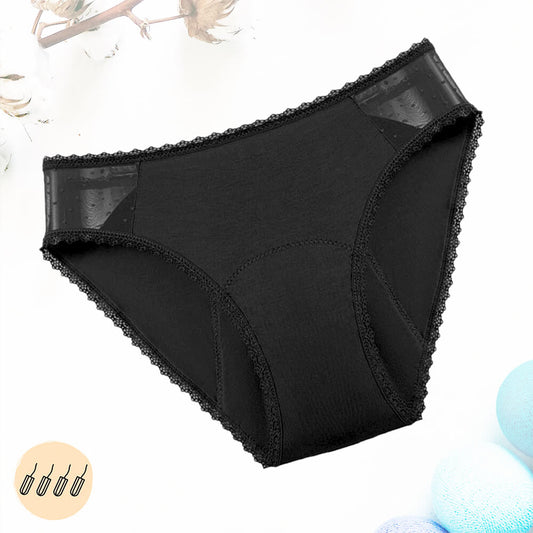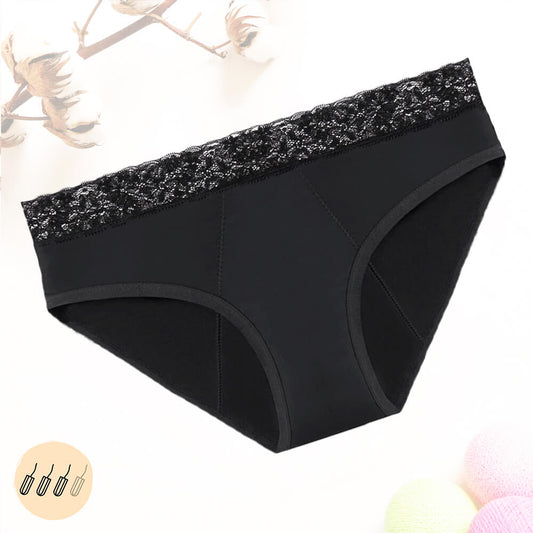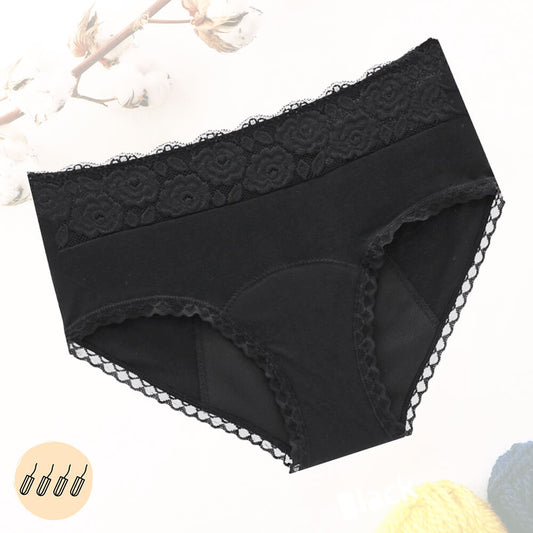
After pregnancy, a new mother's body goes through major changes, including the recurrence of periods, known as the return of diapers. This can be a source of concern for these mums, who are already struggling to adjust to their new lifestyle and lack of sleep. However, the return of diapers is an important step for anyone who marks the return of their body to normal after pregnancy and the birth of their baby. Therefore, it is important to understand the changes that occur during this period and to take the necessary measures to protect your health.
What is layer return?
The return of the diaper is the physiological process by which the rules start again after a pregnancy. This means that the uterus is resetting to start getting ready to receive a new fertilized egg again. Most often, the return occurs between 4 and 8 weeks after giving birth, although this is a personal process that can vary from woman to woman.
Coming in can cause bleeding (lochia), abdominal cramps, and other symptoms associated with regular periods, but these symptoms can also be changed due to childbirth and breastfeeding. It is important to discuss with your doctor what is safest and most appropriate for your body, as certain factors such as complications of childbirth, breastfeeding and medical history can influence the duration and severity of the return of layer.
The return of diapers: a transitional phase for the body
During the first months after the birth of a baby, the organism of the mother is in transition. This change is caused by the activation of certain hormones like estrogen and prolactin (when breastfeeding), while other hormones like progesterone are down. Menstrual cycles begin to return to their normal rhythm and the first periods reappear.
This process, called postpartum, can last from a few weeks to several months depending on the case. The uterus returns to its normal size while the vagina, vulva or even the perineum return to their original shape. The loss of blood, mainly composed of fragments of uterus and remnants of the placenta, can be more or less abundant during the first days following childbirth, but they generally do not last more than 3 or 4 weeks.
During this period, it is important to let the vagina rest for to avoid infections. It is also recommended that you use external protection, such as Period Panties, until your period returns.
The different phases of layer return
The return of the diaper is an important period for the young mother who has just given birth. It marks the transition of a woman's body between pregnancy and postpartum life.
During this period, the uterus recovers from childbirth, hormones rebalance and menstrual cycles gradually return to their normal rhythm. It is a period that can last from a few weeks to a few months and is marked by blood loss called lochia.
The phases of the return of diapers:
-
Lochia
Lochia is bleeding that occurs after childbirth, often within the first few hours or days after birth. The lochia is often abundant for the first three days, then diminishes until it usually stops after 10 days to three weeks.
-
The little return of layer
The small return of diapers can be mistaken for menstruation, but it is actually a natural process of healing of the uterus which manifests itself by bleeding which lasts from 24 to 48 hours, approximately 12 days after the childbirth.
-
The return of layer
The true return of diapers corresponds to the very first periods after childbirth, which can be painful, longer and more abundant than the usual periods. It is advisable to use period panties or postpartum panties rather than tampons or cups, because of the still too great fragility of the vagina.
How long does the return period last?

The return of diaper refers to the first menstruation that occurs after childbirth and can vary in duration in women. On average, the return of diaper can occur between 6 weeks and 6 months after giving birth, although this can vary depending on several factors such as breastfeeding, frequency and duration of sexual relations, as well as general health. from the mother.
In women who exclusively breastfeed, estrogen production is reduced, which can prolong the period without menstruation and delay the return of the diaper. Women who are not breastfeeding may see their first period sooner after giving birth.
It is also important to note that the return of the diaper may be irregular at first, with menstrual cycles that may be shorter or longer than usual. However, over time the cycles should become more regular. If you have any unusual bleeding or pain, it's important to see your doctor to make sure everything is normal.
In conclusion, the return of diaper can vary in duration in women, but on average, it can occur between 6 weeks and 6 months after childbirth. Women who exclusively breastfeed may experience delayed return, while those who don't may experience it more quickly. If you have any unusual bleeding or pain, it's important to see a doctor to make sure everything is normal.
When to resume contraception during the return of diaper?

As ovulation or the return of fertility can take place before the return of childbirth or even during breastfeeding, it is crucial to take contraceptive measures to avoid an unwanted pregnancy.
There are different methods of contraception such as:
- birth control pills
- Intrauterine devices (IUDs)
- Condoms
- Sterilization
- The contraceptive implant
It is recommended to discuss with a doctor to choose the most suitable method of contraception for your needs.
Can you get pregnant before postpartum?
Yes, it is possible to get pregnant before the return of the bed, that is to say before the first periods which occur after pregnancy and childbirth. In fact, fertility can be restored very quickly after childbirth, in some cases even before the return of the bed. However, it is important to note that the chances of getting pregnant depend on several factors such as breastfeeding, the frequency and duration of sex, and the general health of the mother.
When women exclusively breastfeed, their estrogen production is reduced, which can reduce menstrual cycles and fertility. However, even in this case, fertility can be restored quite quickly. Women who are not breastfeeding may begin to ovulate before their first period returns. Bleeding related to childbirth can last from a few days to several weeks and is not considered normal menstruation.
It is imperative to remember that contraceptive methods must be used even before the return of the diaper to avoid an unwanted pregnancy. Women can discuss with their gynecologists the most appropriate contraceptive options for them. Some options, such as intrauterine devices (IUDs), can be installed soon after delivery.
How long do you have to wait after returning from bed to be able to get pregnant?
After the return of the diaper, there is no specific period to become pregnant. It depends on several factors such as your general health, your level of fertility and your lifestyle.
Breastfeeding women may experience reduced fertility due to decreased estrogen production, which can prolong the period of infertility after childbirth. Women who don't breastfeed may become more fertile sooner after giving birth.
It's worth noting that menstrual cycles can be irregular at first, so it's important to track your cycle to determine fertile windows. THE fertility and ovulation signs include cervical mucus et thicker vaginal secretions, a softer and more open cervix, as well as a slightly higher body temperature.
You should also consult your doctor to make sure you are healthy and ready to get pregnant. It's even more important to see a doctor if you have a history of health problems or pregnancy complications.
Post natal follow-up after childbirth
The postnatal consultation is a key moment for new mothers and their babies. Its purpose is to check on the health of the mother and her baby after delivery, to monitor the return of diapers and to discuss concerns and questions related to maternity. This consultation is generally carried out between six weeks and three months after delivery.
During this consultation, the doctor or midwife will first check the mother's general health, in particular by examining her healing and general condition. He may also perform an examination of the genital area to make sure everything is in order. If necessary, he may also prescribe medication to help treat any problems.
Monitoring the return of diapers is also an important part of the postnatal consultation. The doctor or midwife will talk with the mother about her postpartum bleeding and check that everything is going well. He can also discuss contraception for the coming months. It is important to take effective contraceptive measures to avoid an unwanted pregnancy.
During this postnatal consultation, the doctor or midwife can also discuss with the mother her emotional state and general well-being. This is an important time to address any concerns or issues related to motherhood and to seek advice and support.
Finally, the doctor or midwife can also check the growth and development of the baby. He can assess his weight, height and general condition, and discuss breastfeeding or nutrition with the mother.
Which hygienic protection to choose during a diaper return?

During a return, it is advisable to use external sanitary protection such as sanitary napkins or Period Panties rather than tampons or a menstrual cup. Pads can increase the risk of pain and infection, while pads and panties are more comfortable and safer for postpartum bleeding.
It is important to change sanitary protection regularly to maintain good hygiene and avoid any risk of infection. It is also important to see a doctor if the bleeding persists for more than a few weeks.




